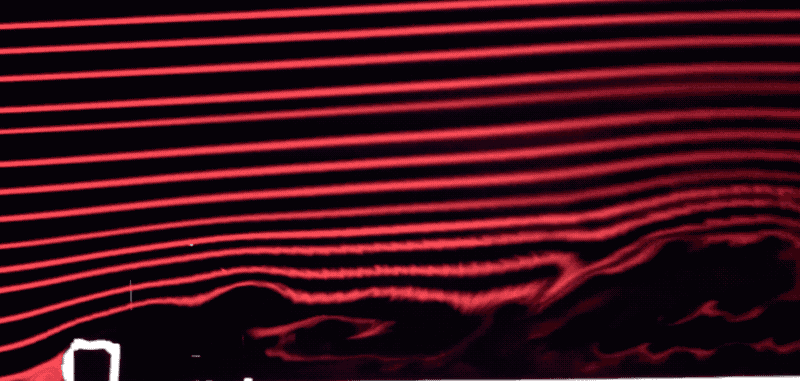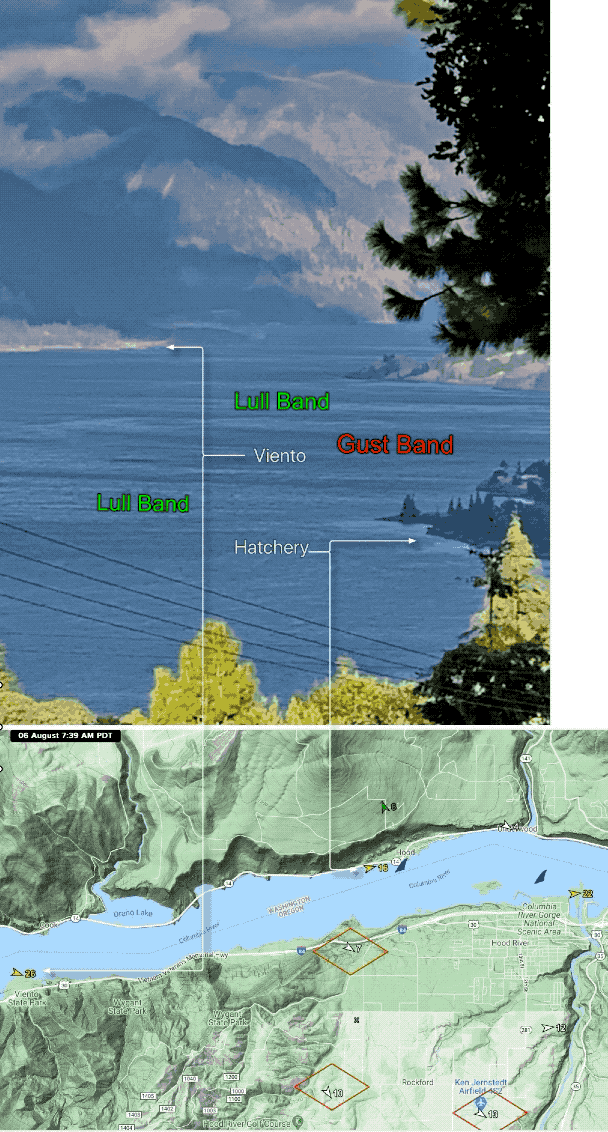Gusts and lulls, up and down, crazy wind. Why are winds sometimes mild and other times wild? There are many complex meteorological causes for the turbulence that causes gusts and lulls, but here we focus on gusts and lulls winds where the causes are very local and easy to visualize.
The local cause of gusts and lulls is thermal turbulence, which occurs on a windy day when the sun heats a surface and parcels of air detach from the surface and rise. As this happens, it disrupts the surrounding wind flow, creating gusts and lulls. We will save thermal turbulence for a later blog.
The second cause of local wind turbulence is known as mechanical turbulence.
To picture this type of turbulence, imagine surface wind flowing across a smooth plain on a cool overcast day. Unless there are stronger winds aloft, the wind speed should be relatively steady.
Now imagine a building in that open plain. As the winds hit the building they compress and accelerate around the sides and top of the building, but leave a wind shadow in the lee of the building. If the wind is strong enough it can form rotors and waves in the wind flow downstream from the building.
Now imagine that this building is on the edge of a lake. These wind waves will create a pattern of gusts and lulls on the water. The wind tunnel animation above shows these wind waves created by the turbulence.
So let’s look at mechanical turbulence in the real world.
In the summer the Columbia River Gorge acts to funnel very strong westerly wind. This wind is almost always very gusty and often there are gust and lull bands. This is due in part to the fact that the Gorge is subject to both thermal and mechanical turbulence.
This next graphic shows the Gorge on a cool cloudy day. Such a day produces very little thermal turbulence, so the surface gusts and lulls are mostly the product of mechanical turbulence.
First, notice the several rocky forested points that stick out into the river. These points produce mechanical turbulence.
Notice the very distinct gust and lull bands on the river down wind from these points.
Then follow the magnifying glass as it looks at all the factors producing these bands.
Especially notice how the walls of the Gorge tend to make the wind on the river W to WSW but the overall wind is more W -WNW. This direction tends to make the gusts and lulls more pronounced on the water.
Last, imagine all this on a very hot day. As the sun heats those points and ridges hot air is going to rise into the westerly wind flow.
Stay tuned for the next blog, where I’ll cover thermal turbulence.

